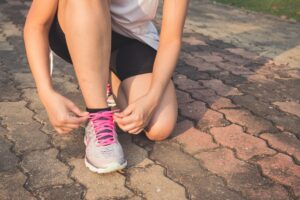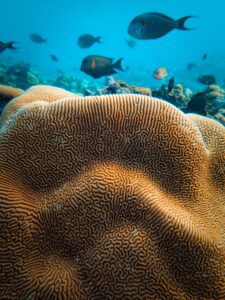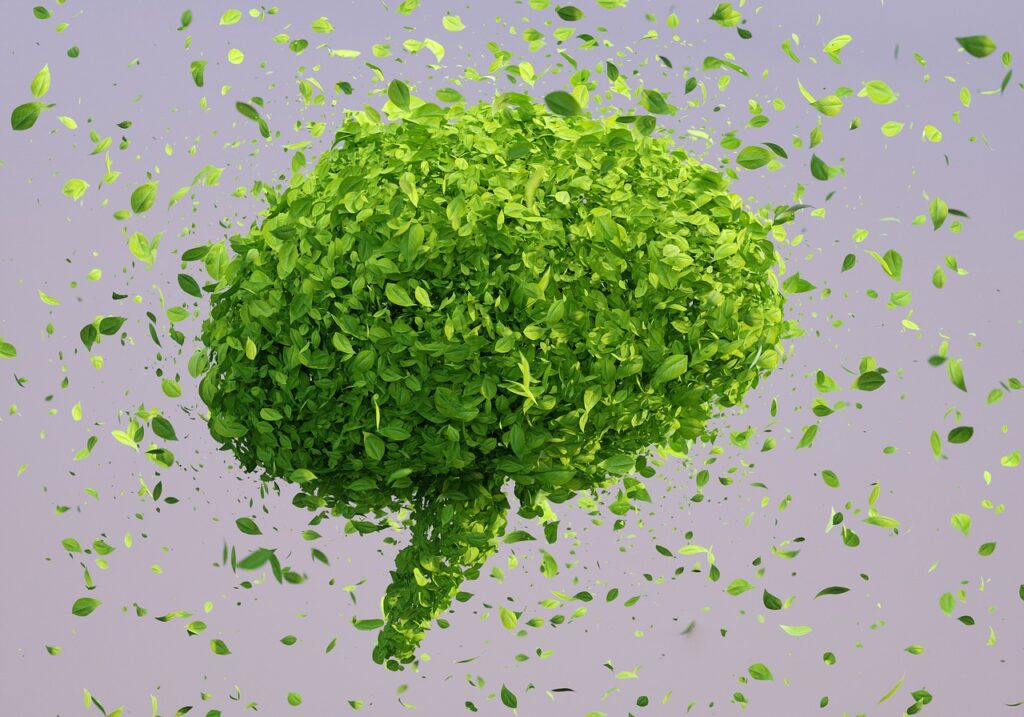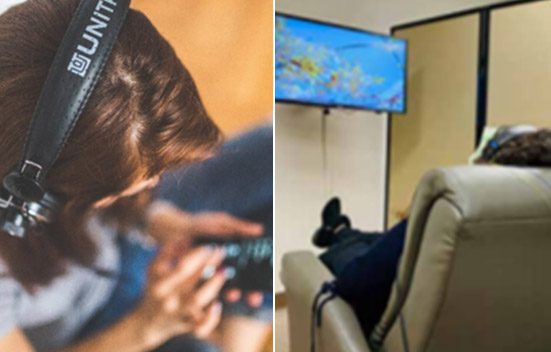A PICK IN YOUR BRAIN AND MOVEMENT!
WHAT IMPACT MOVEMENT HAS ON YOUR BRAIN?
The more you move, the smarter, happier, and younger your brain. Doctors call exercise a smart “polypill” because it is a good medicine for every organ, especially the brain.
WHAT DO SCIENTISTS SAY ABOUT MOVEMENT?
Exercise is the number one brain growth factor says Dr. David Perlmutter, Neuroscientist.
By increasing neurotransmitter activity, improving blood flow, and producing brain growth factors, exercise prepares our nerve cells to bind more easily and stronger. Exercise does this better than any factor that we are aware of at present, says Dr. John Ratey, associate clinical professor of psychiatry at Harvard Medical School.
Movement makes more blood flow to your brain; therefore, movement makes your brain healthier. Why? You need to remember that your brain is one of your top vascular organs, receiving 25 % of the blood your heart pumps.
MOVE MORE, MAKE MORE BLOOD VESSELS
The more cerebral blood vessels, the better your brain. Why? Because when you move, you make better blood vessels within your brain. And more blood vessels deliver more nutrients to your needy brain!
MOVEMENT MAKES EXISTING BLOOD VESSELS HEALTHIER
It is not only the number of blood vessels that supply an organ that keeps it healthy; it is how wide open these vessels are. Did you know that sitters tend to have more narrow blood vessels and the lining of their blood vessels tends to be sticky? And a sticky lining is prone to collecting clots.
MOVEMENT MAKES BLOOD VESSELS MORE “FIT”
Fits vessels become trained to open wider more easily and with less blood pressure required, which promotes more blood flow to your brain!
WHAT MORE FOR YOUR BRAIN?
Besides making more blood vessels, movement makes neurochemicals called BGFs. You need to know that the brain withers when it is BGF deficient. BGF is like a “fertilizer” to your brain, another one is VEGF (vascular endothelial growth factor), a biochemical that helps keep the lining of blood vessels smooth. All good reasons that make Doctors say, “When you move, you make neurochemicals that make your brain smarter, healthier, and happier.”
Here are some “medicines” movement helps your brain make:
- Anti-inflammation to quell neuro-inflammation.
- Happy neurohormones* (dopamine, serotonin, and more) are your antidepressants and mood mellower.
MORE MOVEMENT MAKES FOR A MORE NATURAL MOOD MELLOWER
Movement mellows your mind “Short movements of vigorous exercises are good “medicine” to calm you down from anxiety or lift you from depression. The mood-elevating and mood mellowing-feelings following intense exercise vary greatly among individuals, but people who do experience runner high describe the feeling of “pure happiness” “elation” “a feeling of unity with oneself and nature” “inner harmony” “super energy” and “lessening of pain”. New research has uncovered the hormonal basis for how movement makes happy medicine, it’s called endogenous opioid release. The new term for these neurochemicals is endocannabinoids. These natural opioids could explain why exercises tend to suffer less depression.
MOVEMENT MAKES NO-BRAINER
Dr. Lou Ignarro, lead Nobel Prize-winning research on how movement makes your own “medicine”.
Your movement is a multipurpose medicine, your “internal pharmacy”, makes nitric oxide (NO). NO dilates or widens, blood vessels during exercise. Nitric oxide is also a neurotransmitter, one of those vital messengers that carry neurochemical messages from one nerve fiber to another and are vital to your ability to think smartly and feel emotionally balanced. Furthermore, NO is a natural antioxidant, or “anti-rust” neurochemical and brains need lots of antioxidants because they are prone to rust.
THE OLDER YOU ARE, THE MORE YOU NEED TO MOVE!
Aging brains are more vulnerable to rust, so aging brains need more NO.
Do you want to experience pure happiness at any age?
The answer is, short sessions of vigorous exercise, which are good to calm you down from anxiety or lift you from depression!
BELLY AND BRAIN
The bigger the belly, the smaller the brain, says Dr. Sears.
“The leaner your belly, the lower your mood disorders” is the mantra of psychoneurogastro-endocrinology. It is the study of how your mind controls your hormones and how your belly size affects your mind. How? Abdominal fat is one of the main regulators that stabilize insulin levels, and the insulin level of your blood is related to the obesity level of your waist.
HOW A BIG BELLY SHRINKS YOUR BRAIN?
Diet and exercise are the two familiar determinants of belly bigness, but stress puts pounds and inches around the waist!
When excess stress hormones are too high for too long, they release cortisol, a belly-fat storage neurohormone. This neurohormone sends a text message to its fat-storage buddy, insulin, to store more belly fat. The big fat belly cells then dump their excesses into the blood by spewing out sticky stuff, which slows blood flow to your brain. Slow blood flow – slow brain thinking. As a consequence, Doctors say “Your brain is getting foggy because your belly is getting saggy”.
It is a downward spiral! How? Because excess abdominal fat prompts you to overeat because this type of fat secretes neurochemicals that travel to the hypothalamus and prompt the brain to eat more! It is good to know that women with waist sizes of more than 35 inches have a fivefold increased risk of Alzheimer’s disease, and men with a waist size greater than 40 inches have a threefold increased risk!
HEALTH-RELATED BRAIN CHANGES AS WE AGE
The prefrontal cortex (quicker and smarter decision-making) and the temporal lobe (memory and other cognitive processes) are the areas most improved by exercises AND they are the ones most likely to deteriorate as we get older!
As we age, our brain shrinks, our belly fat increases, our blood flow slows, our vessels “wrinkle”, our blood pressure rises, and growth hormone drops! Wow! The good news is the more we move, the better we sleep, and the smarter we stay! Remember it is not so much your “hormone level” that determines health, but your hormonal balance and exercise balances your hormones.
WHAT ARE THE BEST MOVEMENTS FOR YOUR BRAIN HEALTH?
Generally, three types of exercises are good for the brain. All three build a smarter brain but in different ways. Best for the brain to do all three – strength building, aerobics, and isometrics at least three times a week.
MOVEMENTS IN NATURE ARE BEST, WHY?
Walking on uneven surfaces – grass, sand, twigs, and so on requires more muscles.
Aerobics mainly benefits your brain by increasing blood flow. Aerobics includes walking, running, swimming, and dancing.
YOU DON’T HAVE TIME?
High-intensity interval training is a favorite of trainers and A TIME-EFFICIENT way to get more bang for your exercise buck.
We recommend, while walking, every five to ten minutes vigorously walk faster for a minute, or long enough to feel your heart beating harder and your breathing getting heavier. This type of exercise triggers cellular DNA to produce more energy concluded Mayo Clinic researchers.
ARE YOU DEPRESSED? Perform a 30 to 60 seconds High-intensity interval training exercise to lift your spirit.
AS A GENERAL GUIDE, begin with a 5:1 easy-to-hard ratio, such as 5 minutes of moderate walking to one minute of a really fast pace. Gradually progress to a 3:1 routine. To give your body a rest do it twice a week!
WHAT ARE ISOMETRICS EXERCISES?
Isometrics are muscle-maintaining and muscle-building tips. You can do this exercise anytime, anywhere because your bones don’t move, only your muscle flex.
In isometrics, you simply flex large muscles like your quads, biceps, glutes, and abdominal muscles. Hold them for 30 to 60 seconds until you feel the burn.
 A PEEK INSIDE YOUR BRAIN IN NATURE
A PEEK INSIDE YOUR BRAIN IN NATURE
As you walk in nature, an MRI scanner shows that the area of your brain called the Para hippocampal gyrus releases natural happy neurohormones opiates and dopamine, then your brain dials up the relaxation centers of your brain and dials down the hyper, or anxious, centers of your brain also call arousal centers. As you continue walking, you notice the nature effect, your mental fatigue or brain fog is less, and you are feeling more positive. You like yourself more and appreciate what you have. You leave the park feeling happier and healthier, both physically and mentally!
The elder you get, the higher the dose of go-outside and play we need! Or go outside and “re-create!
Do you need more motivation to move?
MEDICAL BENEFITS ON MOVEMENT!
Just in case you need more motivation to move!
- Anti-inflammatories and antioxidants,
- Helps heart health,
- Improves lung function,
- Facilitate digestion,
- Eases arthritis,
- Minimizes type II diabetes,
- Reduces inflammation.
And do not forget, if you feel down, or find it difficult to move, come see us, Neurofeedback sessions and our tailored programs will change your life and help you to make the change you need to feel happier, healthier, and engaged!
Our recommendation for this summer:
GO OUTSIDE AND PLAY!
WE ALL DESERVE TO BE HAPPIER AND HEALTHIER!
HAPPY SUMMER!
P.S.- In case you would like to know:
- How is dopamine a hormone?
Dopamine is produced in several areas of the brain, including the substantia nigra and the ventral tegmental area. It is a neurohormone that is released by the hypothalamus. Its action is as a hormone that is an inhibitor or prolactin release from the anterior lobe of the pituitary.
- What is the difference between hormones and neurotransmitters?
Neurotransmitters are locally concentrated; hormones are diffused. Neurotransmitters are delivered through the bloodstream, whereas hormones are found primarily in the synaptic cleft. Neurotransmitter receptors have a relatively low affinity for their ligand, compared to hormone receptors.





